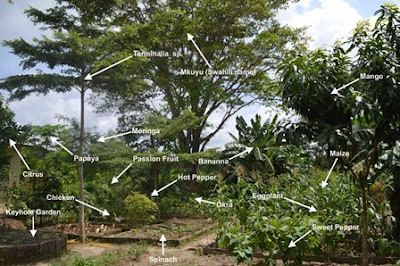PDC LESSON 6.4 PIGEON PEA
PERMACULTURE
COURSE AGRO-ECONOMY
PDC LESSON 6.4 PIGEON PEA
Pigeon pea is
a legume therefore helps to fertilise the ground by fixing nitrogen from the
air into the soil. To know if this is really happening, pull up a seedling to see if there are small nodules growing onto the roots. If
you don’t see any then it means the right bacteria for this legume is not
present in the soil. The bacteria to develop the nodules will need to be bought
from a produce store or a plant nursery. The inoculants come in sealed packets
and can be watered into the ground at the seeding out stage or any time during
the growth phase. This will help to increase the fertility of the soil.
The
peas that form on the plant can be eaten and are in fact the original dahl that
is such a favourite in Indian cuisine. The way I harvest the pigeon peas is
very easy and is done in no time at all. Wait until the pods have dried on the
shrubs and then pick the pods and place them into a pillowcase. Grab the
opening of the pillow slip with your hand, close it and trample the contents
with your feet. All the broken pods will sit on the top while the peas tend to
fall to the bottom corner of the pillowcase. It’s easy to separate them after a
bit of a shake. The peas then need to be put through a flour grinder set on a
very loose setting. This is to split the peas so that the skins come off. These
can then be winnowed away. The peas only take a half an hour or so to cook and
the taste is so delicious.
Text from the roots, Elisabeth Ferkonia (Aus.) PDC studied with Bill Mollison,



Comments
Post a Comment